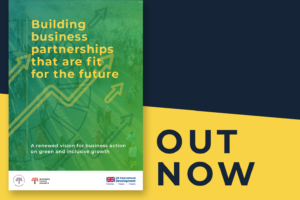The problem of bad labour conditions in the garment supply chain is quite straightforward. If brands and retailers direct orders to wherever they get the best combination of (lowest) price, quality and delivery, suppliers have two choices. Either they constantly increase their efficiency in order to lower unit costs, or they constantly cut every cost they have. The first option involves investment in technology, training and premises. To choose it, suppliers need some longer-term security of orders before they will risk investing. But security is scarce: they can be easily replaced by lower cost competitors as there are very low barriers to entry. Therefore, they mostly go for the second option: they cut all costs (starting with workers’ wages and safety) and just concentrate on coping with the constant pressure on lead times. At the end of the day, fashion is a seasonal industry in which production times are compressed to make room for new product development and new collections. The most admired companies in the fast fashion industry boast 2-3 week cycle times from designers desk to shop shelf at incredible prices and this requires that suppliers get cheaper and quicker all the time.
We know where this has led: to an anonymous supply chain, in which consumers seek lower prices, retailers respond by cutting the margins they give to the brands, brands cut their margins to suppliers and suppliers cut the margins to their workers. Garment workers have become the shock-absorbers of the system: their wages and the hours they work have to absorb all the competitive pressures pushed down the supply chain. The immediate consequences are: 1) a compression in workers’ wages; 2) growing casualisation of work, because suppliers tend to employ a core workforce to reduce their exposure to labour costs and social charges; if they receive more orders they pull in short term or temporary workers, or they subcontract.
And it doesn’t stop there. In such a zero-sum supply chain, suppliers cut the margins to their suppliers who all look to save costs and cut corners. Even the building contractors who construct the factories hollow-out the construction to the point where building collapses are inevitable. In other cases, suppliers simply rent the cheapest space they can, despite the lack of lighting, ventilation and fire exits.
At the other end of the supply chain consumers have benefited from clothing price deflation and more choice than ever before, but at what social and environmental cost?
How do we break this vicious circle? To date, we have seen a lot of ad hoc remediation at the margins – mostly reacting to a crisis like Rana Plaza and using CSR audits. Unfortunately the audits are generally superficial and often gamed by suppliers, and even well done audits do not address the root causes of the problems that frankly lie in the nature of the supply chain itself. We have to take a hard look at the model of the global supply chain we have created and ask ourselves what it would take to make it net positive for people and the environment.
Two critical elements are the involvement of consumers and of workers.
Consumers are changing the incentive structure of the industry, because they are increasingly unwilling to close their eyes and tolerate this situation. A poll carried out by YouGov and the Global Poverty Project found that 74% of respondents would be willing to pay 5% more if they knew the real story behind products. Consumers are ready to stand against unfair fashion: they just need more information to understand its true cost; they need to know the real story behind each product. This is not simply about doing more audits; it is about revealing the lives and the craft of the workers who make our favourite products. There are the social research tools and organisations to do it and this opens the door to the involvement of workers in talking about themselves.
Workers can be directly involved in improving their working conditions and enriching the meaning of their work in the process. Job enrichment is about enabling them to have a say and a stake in the whole production process. Workers can use mobile phones or websites to rate their working conditions. In Cambodia this is done using the Interactive Voice Call, a tool developed by Better Factories Cambodia. There are also simple web tools to raise the awareness of workers about their rights that are effective even with people who have a low literacy rate.
A road map for fashion companies: two simple actions to involve consumers and workers.
• Participate in a programme to assess the impact of your work on people and tell consumers about it. Partner with an organisation that does social research and thus enables you to tell the real stories behind each product in a credible and authentic way.
• Invest in your suppliers to raise skills and motivation and bring artisanal quality back to the industry. How? 1) Work with a smaller number of long-term suppliers to improve productivity, quality and value-addition. These “strategic suppliers” would have longer-term contractual relationships that would allow them to invest in up-skilling workers and up-grading factories. 2) Improve the skills of workers and make their work more meaningful, and better paid, by allowing small teams of multi-skilled workers to produce a whole piece. It requires on the job training and a different organisational structure, but it pays back in terms of efficiency, profitability and the satisfaction of workers who become fully engaged in the organisation of the factory. 3) Enable workers to actively participate in organisations and schemes to improve their working conditions, including the use of mobile phones or websites: devote a person in your HR team to facilitate it.
Change is possible and the tools exist. Disposable fashion means nothing to the people who wear it and to the people who make it; responsible fashion gives us back the real worth of the clothes and shoes we produce and buy.










